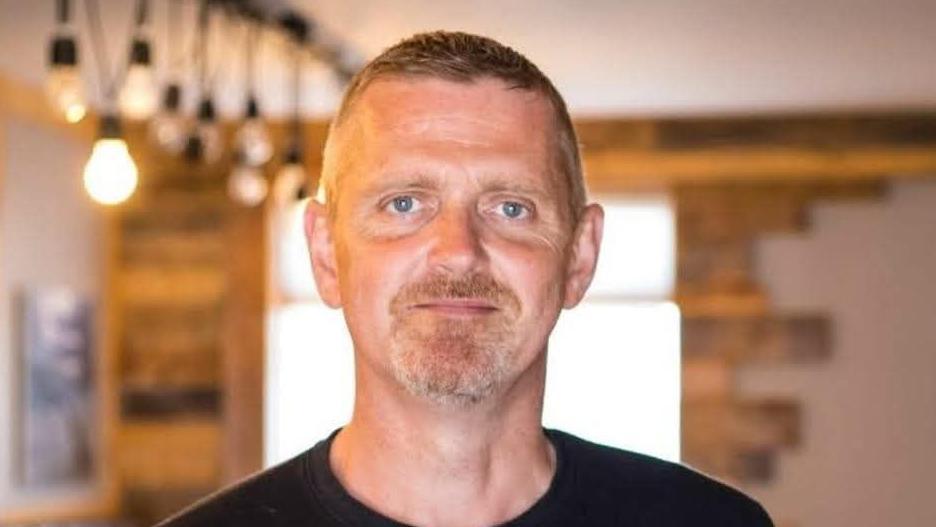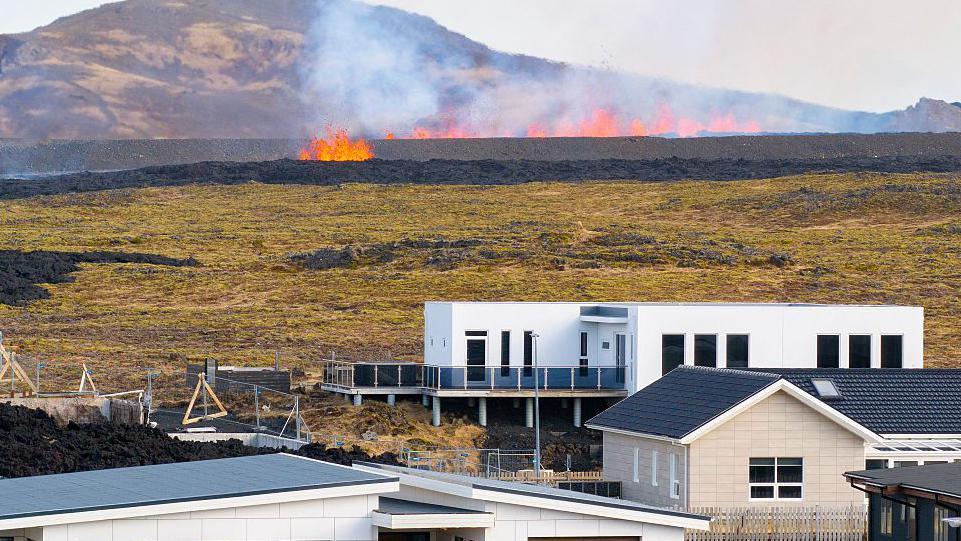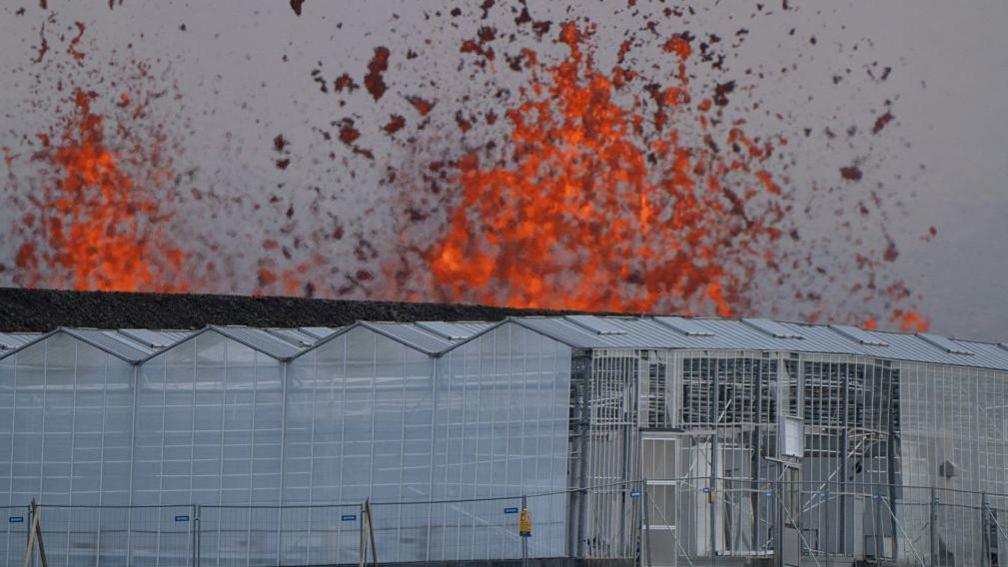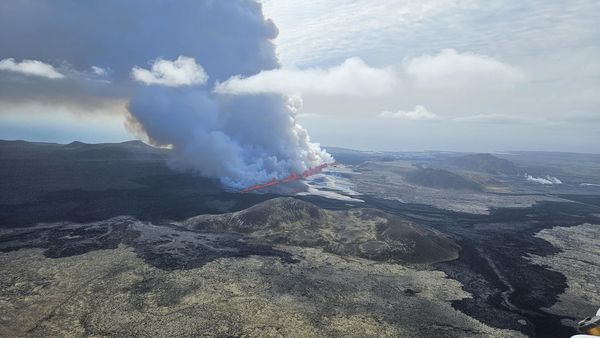Tourists and residents evacuated as volcano erupts in Iceland
Watch: Iceland volcano spews lava after erupting
- Published
Tourists and residents have been evacuated as a volcano erupted in south-west Iceland, threatening a town and popular attraction.
The volcano has been spewing lava in a fiery display of orange and red since the eruption began in the morning, creating a huge crack in the ground which has grown to 1.2km (0.75 miles) long.
Multiple earthquakes have occurred in the volcanic area throughout the day.
The volcano is close to the fishing town of Grindavik and the famous Blue Lagoon spa. A small number of people refused to evacuate the town, local media reported.
Grindavik resident Asrun Kristinsdottir told the BBC she fled after hearing emergency sirens early in the morning.
Living near the volcano for most of her life meant she always had bags packed and ready to go. But she said this time was different because of "constant" quakes as she was preparing to leave.
The protective barriers around Grindavik have been breached, as a new eruptive fissure opened a few hundred meters inside, the Icelandic Meteorological Office (IMO) reported.
It was "extremely difficult" to see this activity inside the town's safety barriers, said Ms Kristinsdottir, who serves as president of Grindavik town council.
People had been asked to "leave the danger zone", the region's police commissioner Ulfar Ludviksson told Iceland's RUV broadcaster. But he said individuals staying in "seven or eight houses there... have decided to remain in the town".
There were fears that the town was "in danger of having lava flows entering the inhabited area", said Rikke Pedersen from the Nordic Volcanological Centre.
A hot water pipe has broken in the northern part of Grindavik, which confirms that considerable cracking has occurred within the town, the IMO said.
However, volcanic activity eased off in the early afternoon on Tuesday.

Thormar Omarrson decided to evacuate his home in Grindavik near the volcano last year, which he said was "heartbreaking"
Thormar Omarrson runs a pizza restaurant in Grindavik that was forced to close due to the eruption.
He told the BBC he had lived in the town for 30 years but relocated with his family in 2024 after the authorities warned about the increasing risk posed by eruptions.
Leaving was "heartbreaking", Mr Omarrson said. "My family was born and raised there and now their community is gone."
He said some of his friends in Grindavik had refused to evacuate: "When you live there in your home you want to be left alone in your home."
Most of the 4,000 residents of Grindavik left in a mass evacuation in 2023 because of the dangers of the volcanic activity. The volcano has erupted several times since.
The length of the magma that formed on Tuesday under the crater series stretched to about 11 km (6.8 miles) - the longest that has been measured since 11 November 2023, meteorologists said. The magma corridor extends about 3km further northeast than seen in previous eruptions.

Residents living near the volcano in the town of Grindavik were ordered to evacuate for their safety
Based on current wind direction, gas pollution from the eruption will travel northeast towards the capital area, the IMO added.
The eruption, which began around 09.45 local time (10:45 BST), occurred after several earthquakes hit the area known as the Sundhnuk crater range.
Multiple eruptions have occurred on the Reykjanes Peninsula since 2021.
The last time the peninsula had a period of volcanic activity was 800 years ago - and the eruptions continued for decades.
Iceland has 33 active volcano systems and sits over what is known as the Mid-Atlantic Ridge, the boundary between two of the largest tectonic plates on the planet.

Flames and molten lava can be seen from a greenhouse on the outskirts of the nearby fishing town
Related topics
More like this
- Published29 May 2024
